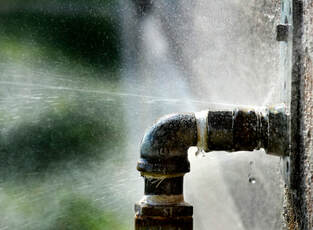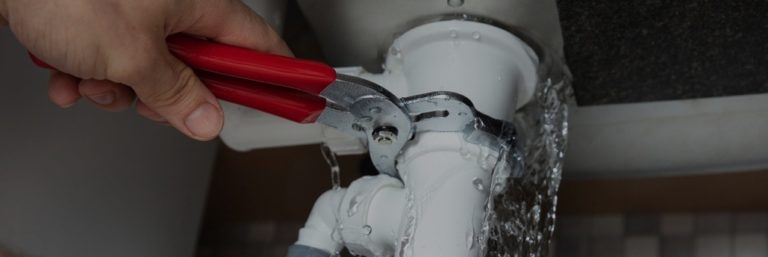How do you feel with regards to Hacks to detect leaks?

Early detection of dripping water lines can reduce a possible calamity. Some tiny water leakages might not be visible.
1. Take A Look At the Water Meter
Checking it is a guaranteed method that helps you discover leakages. If it relocates, that indicates a fast-moving leak. This indicates you may have a slow-moving leakage that could even be below ground.
2. Check Water Consumption
If you spot abrupt modifications, regardless of your usage being the same, it suggests that you have leakages in your plumbing system. An unexpected spike in your costs suggests a fast-moving leakage.
At the same time, a consistent increase monthly, despite having the same practices, reveals you have a slow leakage that's likewise gradually intensifying. Call a plumber to extensively check your home, especially if you feel a cozy location on your floor with piping beneath.
3. Do a Food Coloring Test
When it comes to water usage, 30% comes from commodes. If the shade in some way infiltrates your dish throughout that time without flushing, there's a leakage in between the container and also dish.
4. Asses Exterior Lines
Don't forget to examine your exterior water lines too. Ought to water permeate out of the link, you have a loose rubber gasket. One small leakage can waste tons of water as well as spike your water costs.
5. Evaluate as well as Evaluate the Situation
House owners should make it a routine to check under the sink counters as well as even inside cupboards for any bad odor or mold development. These two warnings indicate a leakage so prompt focus is required. Doing regular assessments, even bi-annually, can save you from a significant problem.
Examine for stainings and compromising as the majority of appliances and pipelines have a life expectancy. If you presume dripping water lines in your plumbing system, do not wait for it to escalate.
Early discovery of dripping water lines can alleviate a prospective calamity. Some tiny water leakages may not be noticeable. Checking it is a surefire means that helps you discover leakages. One tiny leakage can throw away tons of water and also increase your water bill.
If you presume leaking water lines in your plumbing system, don't wait for it to intensify.
5 SMART WAYS TO FIND HIDDEN WATER LEAKS WITHOUT DESTROYING YOUR HOUSE
Monitor Your Water Meter
If you start to notice a higher water bill but you know that your water usage hasn’t increased, it’s a good sign that there’s a leak. Keep a close eye on your water meter to see if you detect any huge fluctuations.
While you’re outside, make sure that there is no water source accidentally left turned on such as a garden hose. Turn all water off including inside water before you check the meter.
Next, take a closer look at the leak indicator and look for any movement. It depends on the type meter you have but for many, it’s a triangular-shaped dial. It may also look like a small silver wheel that spins when water flows through it.
If either of these types of dials is turning after you’ve turned the water off, you likely have a leak. Another option is to take a reading and then wait an hour or two.
Take a second water meter reading to see if anything has changed. This is how to detect water leaks for most of your home. Just make sure you haven’t used any water during that hour to a two-hour window.
Check Your Faucets
For many homeowners, the source of a water leak stems from the faucets. A worn rubber washer is often the culprit and can be found underneath the handle.
You can easily replace the washer if you have the correct tools. You will need to turn the water off under the sink, or at the main cutoff valve.
Next, remove the faucet handles to access the gasket. Most home improvement or hardware stores sell replacement gaskets and the tools you need to fix this simple, common problem.
How to Detect Water Leaks from Your Toilet
The toilet is another common culprit for water leaks, and it can often go unnoticed. A leaky toilet can waste several hundred gallons of water, which also means it can waste quite a bit of money.
Remove your tank lid and add a few drops of food coloring to the tank. Dye tabs are another easy alternative that can be purchased at many hardware stores.
Let the coloring saturate the water and wait approximately 30 minutes without flushing. If any color has come through the tank and into the toilet bowl, you likely have a leak.
Luckily, these types of leaks can often be resolved by replacing the flapper. The flapper has likely just worn out over time or become cracked which causes water to constantly flow from the tank into the bowl without you even noticing.
Another toilet-related red flag? If you need to jiggle the handle to keep your toilet from running, you likely have an issue with the flush bar and chain sticking.
You can fix this by adjusting the nut that secures this mechanism inside the tank. Or, you might need to replace the handle since it could be sticking.
Be Aware of Underground Water Leaks
Outdoor water leaks can get quite expensive to repair, so it’s important to know what to look for. If an area of your yard seems softer than others or you notice dark spots, this could be cause for concern.
If one particular area around your home seems to stay wet even after a dry spell, this is a red flag. You can also look closely near your driveway and street and see if you notice any unusual water flow.
Water flow doesn’t have to be a constant stream of flowing water. Even puddles that seem out of place may indicate that there’s a deep, underground leak.
If you suspect that you have an underground leak, call your local water or utility company as soon as possible. They have the tools and the know-how to further diagnose and fix the issue.

Do you really like reading up on Finding hidden leaks? Try leaving a review down below. We would be interested to hear your responses about this write-up. In hopes that you come back again later on. Appreciated our blog posting? Please share it. Let somebody else check it out. Thank you so much for taking the time to read it.
Comments on “Overview To Water Leakage Detection At Home”